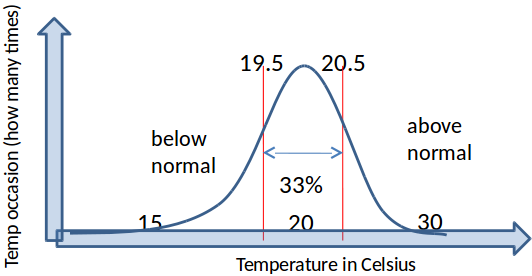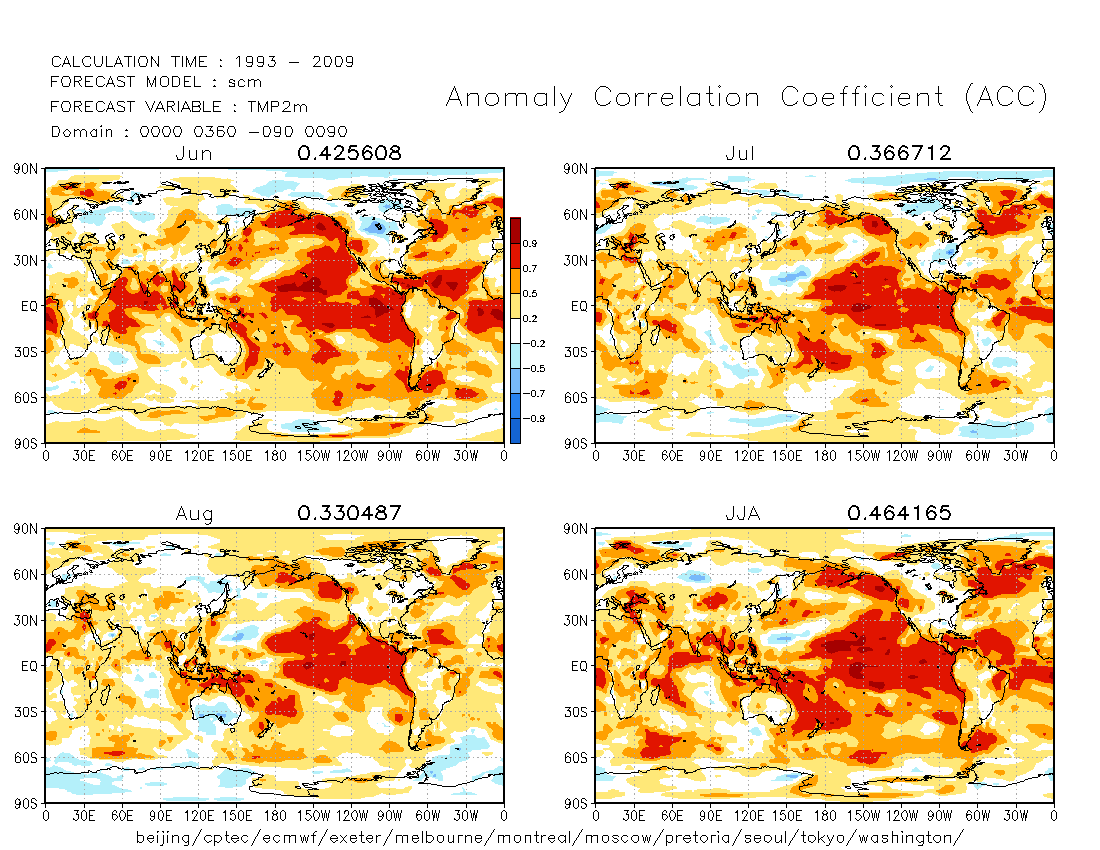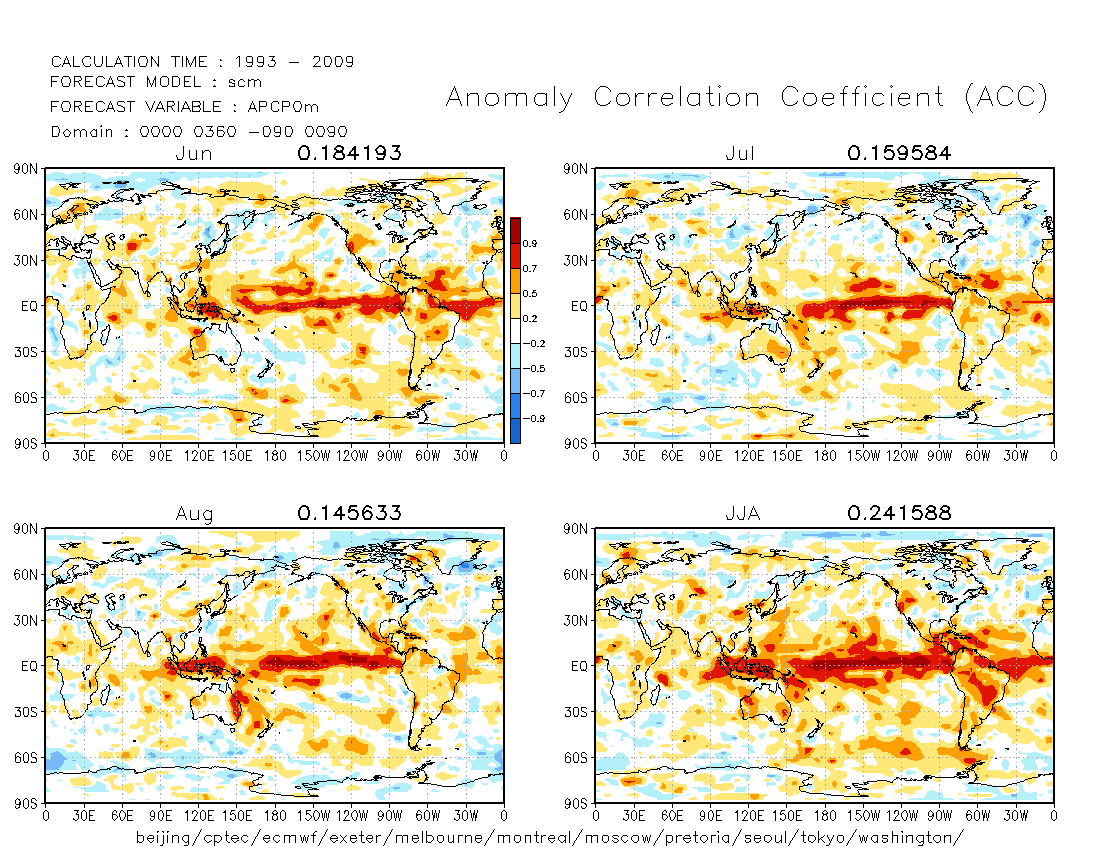The weather forecast range can be from 6 hours (now casting) to up the two weeks in advance (long range weather forecast). A weather forecasting model and the current/initial state of the atmosphere at the time the forecast is performed, are used.
If we take a weather forecasting model and we add to it an ocean forecasting model we will obtain a climate forecasting model. Seasonal Forecast is a climate forecast ranging up to 1 year ahead. Seasonal Outlook represents a 90-day average of the seasonal forecast’s daily realizations.
Skill is a measure of the forecast's accuracy. The skill is very low beyond two weeks, and not very useful in terms of daily forecasts. Seasonal forecasts can still be skillful, but this skill mostly depends on the geographical location of the region of interest.
Ensembles are climate forecasts with slightly changed initial conditions. Ensembles are very helpful in seasonal forecasting:
- Error cancellation when averaging ensemble members.
- Enabling us to assess a chance (probability) for a certain result (e.g. how many members say that it will be colder than normal).

Ensemble prediction
The results of the seasonal forecast are compared to the normal climate of the 90-day period. To define the normal climate, we have to take 30 years of temperature data. As an example, we can look at the normal climate for June, July and August (JJA) in Ottawa. Thirty summers = thirty numbers, is used. The climatology is 20℃. We select a threshold of ~33% of all summers. If the forecast for temp is higher than 20.5℃, we declare it above normal. Lower than 19.5℃ is below normal. In between is near normal.

Climatology for Ottawa JJA.
|
Below normal |
Near normal |
Above normal |
|---|---|---|
|
15 |
10 |
35 |
|
25% (15/60) |
17% |
58% |
Seasonal forecast for OTTAWA JJA (ensemble forecast with 60 members). The highest confidence (~60%) is in the above normal category.
To asses real-time seasonal forecast of the multi-model ensemble (MME), we need to evaluate its historical performance. Forecasts for every summer between e.g. 1981-2010 yields data for 30 summers. All ensemble members from all models are used. We calculate a score (e.g. correlation coefficient) for 30 summers for temperature and precipitation.The skill score (correlation coefficient) is based on 17 years, for the multi-model approach.

JJA Temperature

JJA Precipitation
